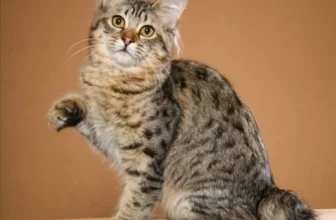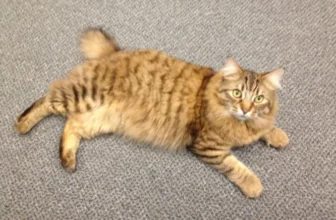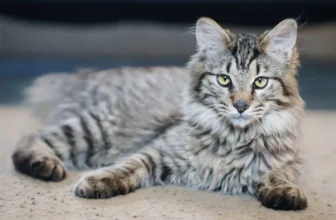The American Bobtail is a fascinating breed of feline known for its distinctive bobbed tail and unique hunting abilities. But did you know that these sturdy cats also played a role in both World War I and World War II? It may seem surprising, but the American Bobtail’s loyalty, bravery, and adaptability made it the perfect companion for soldiers both at home and on the front lines. In this article, we will take a closer look at the journey of the American Bobtail during the world wars and explore the heroic stories of these feline soldiers. Let’s dive in and discover the incredible history of this remarkable feline breed.
The American Bobtail Before the Wars
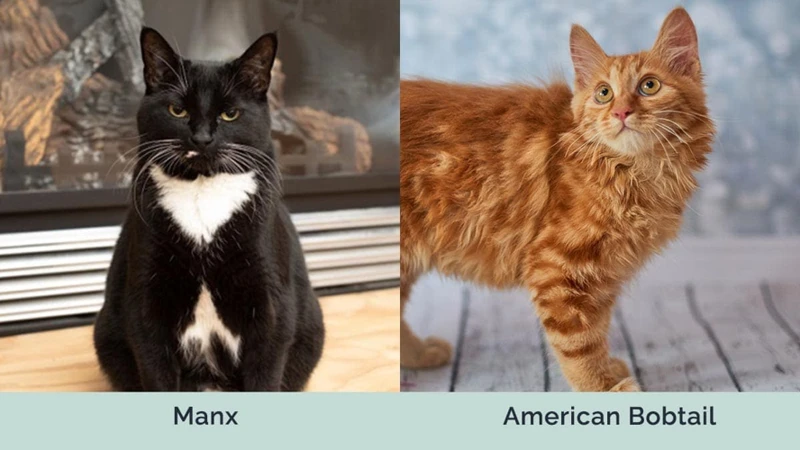
The American Bobtail cat breed has been around for centuries and has played many roles in different cultures and historical periods. There is evidence that the American Bobtail is descended from ancient feline populations in Asia, which then spread to other parts of the world. The breed found a special place in Native American folklore, where it was described as having powers of healing and magic. American Bobtails were also believed to have been companions to early settlers in the Wild West, helping to keep their homes and farms free of rodents.
In the early 1900s, the American Bobtail began to be recognized as a distinct breed and gained popularity as a hunting companion. Their strong, muscular bodies and keen senses made them excellent partners for outdoorsmen seeking game. The breed’s loyal and friendly nature also made them beloved family pets.
By the time of the World Wars, American Bobtails were well-established in the United States and beyond. They had become a fixture in popular culture, appearing in movies, literature, and even the White House. Their versatility and adaptability made them valuable assets in various fields, including entertainment and exploration.
Despite their wide-ranging accomplishments, it was during the World Wars that American Bobtails truly showed their mettle. Although they were not officially enlisted in the military, many Bobtails accompanied soldiers and sailors to the front lines. They served as companions, rat-catchers, and morale boosters, providing comfort and joy in difficult circumstances.
The American Bobtail’s legacy in the first and second World Wars is a testament to their resilience, intelligence, and loyalty. Today, the breed continues to thrive and has retained its status as a beloved companion of families and outdoorsmen alike. If you want to learn more about the American Bobtail’s place in popular culture, check out our article on /american-bobtail-pop-culture/.
Brief Overview of American Bobtails
The American Bobtail breed is a fascinating and beloved feline breed with a long and storied history. Their unique physical attributes and endearing personalities have endeared them to cat lovers around the world. American Bobtails have been a part of American history for centuries, appearing in Wild West folklore and as hunting companions for pioneers. Even today, they are popular pets for families and have gained a reputation for being independent, intelligent, and loyal. In this section, we will provide a brief overview of the American Bobtail breed, including its origins and key characteristics. For more in-depth information about their role in various historical periods, check out our page on American Bobtails in the American Revolution.
Origins of American Bobtails
The origins of the American Bobtail are somewhat of a mystery, with no clear consensus on how these cats first came to be. Some believe they developed naturally in the wild, while others believe they were the result of specific breeding programs. However, we do know that American Bobtails were first documented in the United States in the 1960s.
It’s possible that American Bobtails have been around for much longer than that, with some suggestions that they may have even existed in the ancient world. However, there is little evidence to support these claims. In fact, it wasn’t until the 1800s that cats with bobbed tails began to feature in American folklore, with stories of these cats being the companions of cowboys on the western frontier.
Despite these early associations with the Wild West, American Bobtails were not specifically bred for hunting or other working purposes. Instead, they were primarily kept as beloved pets, thanks to their affectionate and intelligent personalities. Their distinctive appearance and loyal nature made them popular with cat owners across the country, including several famous explorers and even at the White House.
Today, American Bobtails remain a popular breed for those looking for an affectionate and easygoing companion. While their origins may be shrouded in mystery, their role as feline heroes in both World War I and World War II is a testament to their resilience and loyalty.
American Bobtails and World War I
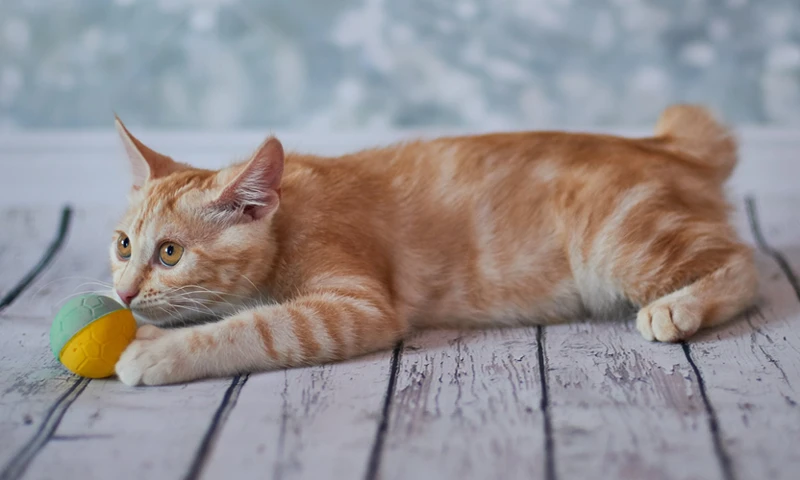
During World War I, American Bobtails proved to be valuable assets to the military for three distinctive reasons: their ability to catch rats, their companionship with the troops, and their talent as morale boosters. While there is no exact record of how many bobtails served in the war, the breed was known to be a popular choice among soldiers.
Deployment of American Bobtails to the Front Lines
During the war, American Bobtails were deployed to the front lines alongside soldiers. These cats were trained to hunt and catch rats, which were responsible for spreading diseases among soldiers. Bobtails, with their hunting skills and agile nature, were able to catch and eliminate rats in the trenches, reducing the risk of disease amongst the troops.
Bobtails as Ratters and Companions
Aside from their duties as ratters, Bobtails were also valued companions for soldiers. Being away from loved ones and the comfort of home was difficult for soldiers during the war, but the presence of a loyal pet provided much-needed companionship and comfort. Bobtails’ friendly and affectionate nature made them perfect companions for soldiers in the trenches.
Bobtails as Mascots and Boosters of Morale
Bobtails were also known to serve as morale boosters among the troops. These cats were often adopted as mascots by military units, and pictures of them were featured in military newspapers and magazines. Bobtails were known to have a calming and uplifting effect on soldiers, and their company and playfulness provided a much-needed mental break from the horrors of war.
American Bobtails played an important role in World War I, not only as ratters but also as cherished companions and morale boosters. To this day, the breed’s service and dedication during the war are remembered and appreciated by many.
Deployment of American Bobtails to the Front Lines
As the Great War shook the world, the role of animals on the battlefield became increasingly diverse. One of the most remarkable additions to the war effort was the use of American Bobtails, whose intelligence and hunting skills made them invaluable assets for the military. Soldiers who had already encountered these cats in civilian life vouched for their prowess in vermin control and affectionate behaviour towards humans. As a result, the military quickly deployed them to the front lines. Let’s explore how these feline warriors performed on the battlefield.
Bobtails as Ratters and Companions
During World War I, American Bobtails were an important part of the war effort. In addition to being kept as companions by soldiers, they were also used for practical purposes such as hunting rats. This is because Bobtails are natural hunters and can easily catch small rodents. These cats would hunt rats in the trenches and on the battlefield, helping to keep the soldiers healthy by reducing the spread of disease.
Companions were also crucial during the war, especially for soldiers spending long periods of time away from home. Bobtails were known for being affectionate and loyal, and they provided much-needed comfort to soldiers in the midst of the chaos of war. They were seen as a source of laughter and joy, and even helped improve the mental health of soldiers.
Soldiers grew attached to their feline companions, giving them names and treating them like family. According to some reports, soldiers would even risk their lives to rescue their cat from danger.
In modern times, American Bobtails still make excellent companions. Their affectionate and loyal nature make them popular pets. Many people also choose to adopt Bobtails because of their hunting skills. They can be trained to hunt pests like mice and rats, making them valuable members of households.
If you’re considering adopting an American Bobtail, keep in mind that they require a lot of attention and love. They bond closely with their owners, and require plenty of playtime and affection. But with the right care, an American Bobtail can make a loving and loyal companion for years to come.
American Bobtails were valuable members of the war effort during World War I, providing both companionship and practical skills like rat hunting. Today, they continue to make wonderful companions for those seeking a furry friend with a bit of a wild side.
Internal link to ‘/american-bobtail-hunting-companion/‘ can be placed on the phrase “These cats would hunt rats in the trenches and on the battlefield”.
Bobtails as Mascots and Boosters of Morale
During World War I, American Bobtails served not only as ratters and companions but also as mascots and boosters of morale. These feline heroes were often portrayed in popular culture and media as symbols of hope and courage on the front lines. Many Bobtails were adopted by soldiers and became symbols of individual units, bringing a sense of comfort and camaraderie to the troops.
One famous Bobtail mascot during WWI was Stubby, who served with the 102nd Infantry of the US Army. Stubby’s story is a true testament to the bravery and loyalty of American Bobtails during the war. Stubby was originally found as a stray on the Yale University campus and was adopted by the soldiers of the 102nd. Stubby quickly became a beloved and integral member of the unit, participating in drills and even alerting soldiers to incoming gas attacks.
Another famous Bobtail mascot was Whiskers, who served with the British Expeditionary Force. Whiskers was adopted by a British officer and became the mascot of the officer’s entire regiment. Like Stubby, Whiskers played an important role in keeping the spirits of the soldiers high during the war.
It’s important to note that not all Bobtails were official mascots during the war. Many soldiers adopted Bobtails as their own personal companions, providing comfort and a sense of home during the difficult times. These Bobtails were often involved in the day-to-day lives of the soldiers, accompanying them on patrols and even sleeping next to them in the trenches.
The American Bobtail played a crucial role in boosting morale and providing companionship during World War I. Their loyalty and bravery were integral to the war effort and their legacy lives on to this day. To read more about famous Bobtail owners throughout history, check out our article on famous Bobtail owners.
American Bobtails and World War II
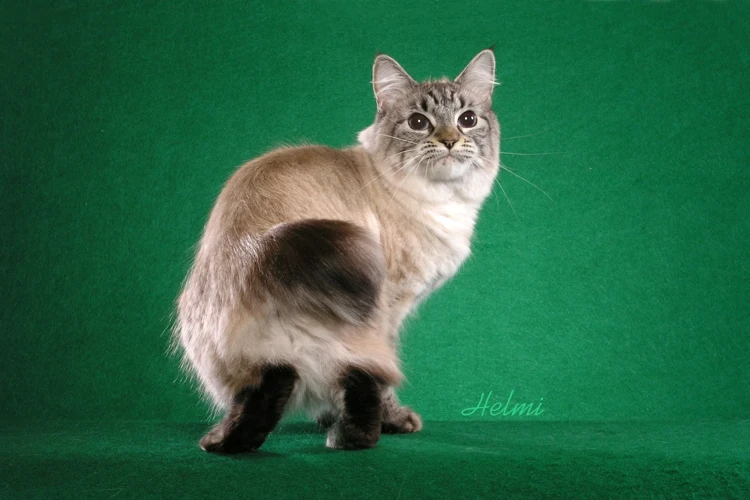
During World War II, American Bobtails were once again called upon to serve their country. These sturdy and adaptable cats quickly proved their worth in various roles on both the Pacific and European fronts. Bobtails in the Pacific Theater and European Theater were used as ratters on ships, helping to keep disease-carrying rodents at bay. They were also valuable companions to soldiers, boosting morale and providing much-needed companionship during the long days and nights of wartime.
One American Bobtail in particular, Sgt. Bill B-106, went above and beyond the call of duty on the Pacific front. Sgt. Bill served alongside his human comrades in the jungles of Guadalcanal and Bougainville, tirelessly patrolling the camp and alerting soldiers to approaching enemies. He also provided comfort to wounded and homesick soldiers, earning the love and respect of all who knew him. Sgt. Bill even survived being shot, earning him a Purple Heart for his bravery.
Other famous American Bobtails of the World Wars include Topsy, the Waif Cat of the AEF, who was adopted by American soldiers during World War I and became a beloved mascot, and Courageous Bob, a Bobtail who served in the Pacific alongside the US Navy and was awarded the Purple Heart for his service.
Despite the hardships of war, American Bobtails continued to thrive and make a difference in the lives of soldiers and civilians alike. Today, these brave and loyal cats are remembered for their service and honored for their contributions to the war efforts. To learn more about the history of American Bobtails in other cultures and time periods, check out our article on American Bobtails in Myth and Folklore.
Bobtails in the Pacific Theater and European Theater
As World War II entered its most intense phase, American Bobtails played a significant role in the Pacific Theater and European Theater. These brave felines, with their keen hunting skills and affectionate temperament, quickly won the hearts of the soldiers. They were not only skilled ratters and companions but also served as morale boosters for the troops. The Bobtails’ presence in the battlefields provided a much-needed distraction from the horrors of war. Let’s explore the unique contributions made by these incredible cats on the frontlines.
The Story of Sgt. Bill B-106, American Bobtail Hero
During World War II, the American Bobtail breed once again proved to be an asset to the US military, with many examples of bravery and heroism. One such example is the story of Sgt. Bill B-106, an American Bobtail who served in Europe during the war.
Sgt. Bill B-106: A Brave Companion in Europe
Sgt. Bill B-106 was a fierce and loyal American Bobtail who served alongside the US Army during World War II. He was assigned to a US infantry unit in Europe, where he quickly became a beloved companion and friend to the soldiers.
According to accounts from the soldiers who served with him, Sgt. Bill B-106 was a skilled hunter and helped the troops catch rats and other vermin that infested their camps. This in turn helped to prevent the spread of disease and provided a source of food for the soldiers.
But Sgt. Bill’s contributions went far beyond his skills as a hunter. He was a comfort to the soldiers during difficult times, and his antics often lifted their spirits when morale was low. Even in the midst of battle, Sgt. Bill could be found bravely accompanying his human comrades, providing a sense of comfort and camaraderie.
Sgt. Bill’s brave service did not go unnoticed. In fact, he was eventually awarded the Purple Heart, a military honor reserved for service members who are wounded or killed in battle.
Sadly, Sgt. Bill was wounded in action and ultimately succumbed to his injuries. He was buried with full military honors, a fitting tribute to a brave and loyal companion who had fought alongside his human comrades in Europe.
Today, Sgt. Bill B-106 is remembered as a true hero of the American Bobtail breed, and his legacy lives on as a testament to the bravery and loyalty of these remarkable felines.
| Sgt. Bill B-106: An American Bobtail Hero | |
|---|---|
| Skills | Skilled hunter, helped catch rats and other vermin |
| Role during the war | Companion to soldiers; lifted morale |
| Awards | Purple Heart |
| Legacy | Remembered as a true hero of the American Bobtail breed |
Sgt. Bill B-106’s story is a testament to the important role that American Bobtails played in the World Wars, both as skilled hunters and as loyal companions to our troops. Their bravery and dedication will always be remembered and honored.
Famous American Bobtails of the World Wars
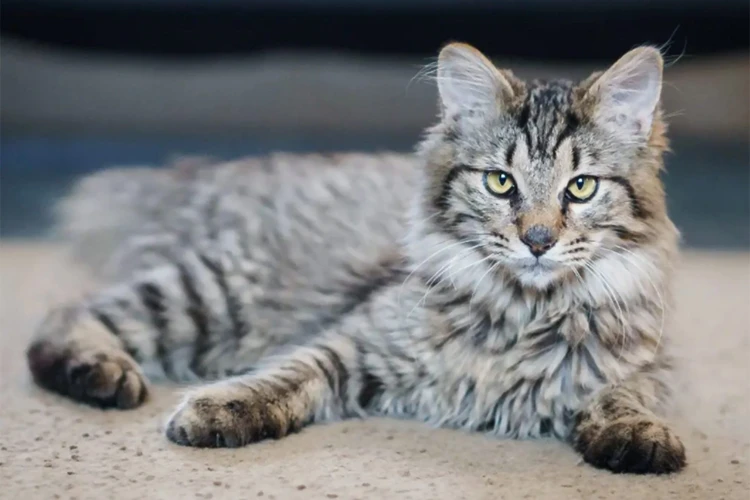
During the World Wars, there were many American Bobtails who became legends in their own right. Let’s take a look at some of the most famous Bobtails from that time period.
Topsy, the Waif Cat of the AEF
Topsy was a stray American Bobtail who found herself in the midst of the World War I. She was discovered by a group of soldiers from the American Expeditionary Forces (AEF) who took her in as their mascot. Topsy became beloved by the soldiers and was known for her loyalty and bravery. She accompanied them throughout the war and survived the Battle of the Argonne Forest.
Many soldiers admired Topsy for her ability to survive in the harsh conditions of the war, and they considered her a lucky charm. After the war, Topsy became a symbol of hope and resilience for many who had experienced the horrors of war.
Courageous Bob, the Bobtail with a Purple Heart
Courageous Bob was an American Bobtail who served in World War II. He was trained to detect explosive mines and was known for his bravery on the front lines. During a mission, Courageous Bob was injured by a landmine and was awarded a Purple Heart, becoming the first cat to ever receive the honor.
Courageous Bob recovered from his injuries and went on to continue his service in the war. He was known for his cheerful demeanor and his unwavering dedication to his duty. After the war, Courageous Bob returned home to a hero’s welcome, and his image became a symbol of the bravery and sacrifice of all the animals who served during both World Wars.
These American Bobtails, along with many others, played an important role in the World Wars and left a lasting legacy of loyalty and bravery. To this day, we honor their service and courage, and they remain an important part of the history of the United States.
Topsy, the Waif Cat of the AEF
As if ripped right out of a Hollywood movie script, Topsy, the Waif Cat, was found wandering the streets of Paris during World War I. How this feline survived the bombings and chaos is unknown, but what we do know is that Topsy, like many other cats during the time, joined the Allied forces and became a valuable morale-boosting companion. She eventually found her way to the American Expeditionary Forces (AEF), where she quickly became beloved by the soldiers. Let’s dive deeper into the story of Topsy, the fascinating feline hero of the Great War.
Courageous Bob, the Bobtail with a Purple Heart
During World War II, one American Bobtail stood out among the rest for his bravery and sacrifice. His name was Courageous Bob and he was part of the U.S. Army’s K-9 Corps. Bob was deployed to the Pacific Theater, where he served as a messenger dog. He communicated vital information to his handlers and helped soldiers navigate through dangerous terrain.
On one occasion, Bob and his handler were ambushed by enemy forces. Despite being injured, Bob continued to perform his duties, refusing to abandon his post. He even managed to alert his handler about the presence of enemy troops, allowing them to take cover and avoid being captured.
Thanks to his brave actions, Bob was awarded the Purple Heart, making him the first American Bobtail to receive such an honor. His story became well-known among soldiers and civilians alike, inspiring many to adopt American Bobtails as war companions.
The Legacy of Courageous Bob
Courageous Bob’s story is just one example of the incredible contributions that American Bobtails made to the war effort. His bravery helped to save lives and protect soldiers, and his legacy continues to inspire people today.
In honor of Courageous Bob and the many other American Bobtails who served during the World Wars, organizations like the American Bobtail Fanciers Association have worked to preserve the breed and raise awareness about their wartime service. Today, American Bobtails are popular pets, known for their loyalty and affectionate nature.
If you are interested in learning more about American Bobtails, there are many resources available. Check out our articles on American Bobtails in the Wild West or American Bobtails in the White House to discover more about this fascinating breed. You can also explore our articles on American Bobtails in the Ancient World or American Bobtails and Famous Explorers to learn about their rich history and cultural significance.
Legacy of the American Bobtail in the World Wars
The World Wars brought an unprecedented level of chaos and destruction that affected not only human lives, but also the lives of animals. Among the animals that played a significant role during these turbulent times were the American Bobtails, a breed of felines that had been known for their affectionate personalities and exceptional hunting skills long before the wars broke out.
During the wars, American Bobtails served as companions, ratters, mascots, and even hero cats. They were deployed to the front lines of the battles in Europe and the Pacific, where they provided solace, comfort, and entertainment to the troops. Their hunting skills were also put to good use as they hunted down rats and other pests that infested the trenches and warships.
After the wars were over, the legacy of the American Bobtails lived on. However, the wars had taken their toll on the cat population, and many cats had been lost during the conflicts. Nevertheless, some American Bobtails survived and went on to lead fulfilling lives as pets and companions.
Today, the American Bobtail breed continues to be recognized as a symbol of the courage, loyalty, and resilience of animals in times of war. Various organizations commemorate their contributions by awarding medals and honors to cats that have performed exceptional acts of bravery in the line of duty. Additionally, the breed’s hunting and companion skills are still valued by cat enthusiasts all over the world.
The legacy of the American Bobtail in the World Wars is a testament to the bond that exists between humans and animals during times of crisis. These furry felines were a source of comfort, companionship, and even heroism to the troops who fought in these conflicts. Though the wars are long over, their legacy lives on, and the American Bobtail remains an enduring symbol of the bravery and resilience of animals in the face of adversity.
The Aftermath of the Wars and the Bobtail Population
As the guns of World War I and World War II fell silent, the world was forever changed. Countless lives were lost, and the global community had to figure out how to move forward. One small but meaningful impact of the wars was on the population of American Bobtails. While these felines had played important roles in the conflicts, their future was uncertain as the world began to rebuild. What happened to the American Bobtail population after the wars? Let’s take a closer look.
Commemorating American Bobtails in Modern Times
In modern times, the brave and loyal American Bobtails that served in the World Wars are commemorated in various ways. One of the ways is through the establishment of memorials and monuments dedicated to these feline heroes.
The American Bobtail Memorial in San Diego, California
This memorial is dedicated to the American Bobtails that served in World War II. The memorial is located at the Miramar National Cemetery in San Diego, California. The centerpiece of the memorial is a bronze statue of Bob, the Bobtail with a Purple Heart.
The Bobtail Brigade in Washington, D.C.
The Bobtail Brigade is a non-profit organization that is dedicated to honoring the service and sacrifice of American Bobtails in the World Wars. The headquarters of the organization is in Washington, D.C. The organization works to raise awareness about the bravery of these feline heroes and to provide support to Bobtail owners and enthusiasts.
Bobtail Day in Detroit, Michigan
Bobtail Day is an annual event held in Detroit, Michigan, to honor the American Bobtail. The event includes a parade of Bobtail cats, a feline costume contest, and various activities for cat lovers. The event is a celebration of the American Bobtail and its legacy in the World Wars.
The American Bobtail Registry
The American Bobtail Registry is an organization that works to preserve the breed standard of the American Bobtail. The registry maintains a database of registered Bobtails and provides information and resources to Bobtail owners and breeders. The registry also works to educate the public about the history and significance of the breed, including its role in the World Wars.
The commemoration of American Bobtails in modern times serves as a reminder of the bravery and sacrifice of these feline heroes. Through memorials, organizations, and events, the legacy of the American Bobtail in the World Wars continues to be honored and preserved.
Conclusion
After delving into the fascinating history of the American Bobtail and its role in the World Wars, it is clear that these feline creatures deserve to be recognized as true heroes. From their deployment to the front lines to their service as ratters and companions, mascots and boosters of morale, American Bobtails played a vital part in keeping the troops and military establishments functioning.
Sgt. Bill B-106’s story stands out as a testament to the bravery and loyalty of American Bobtails in the face of danger. Topsy and Courageous Bob were also notable individuals whose contributions were not forgotten by their fellow soldiers.
Despite the significant role that American Bobtails played during the World Wars, the population of these cats decreased due to various factors. Nevertheless, it is heartening to see that these feline heroes are still commemorated today.
In conclusion, the American Bobtail’s journey through the World Wars is a story worth telling. It is a tale of bravery, loyalty, and companionship, and a reminder that even the smallest and seemingly insignificant creatures can make a huge impact on the world. Not only did these cats provide practical support in wartime, but they also brought a sense of comfort and joy to those who were far away from home. The legacy of the American Bobtail in the World Wars is a valuable part of the history of both the feline species and the military history of the United States.
Frequently Asked Questions
What is the American Bobtail breed?
The American Bobtail is a unique breed of domestic cat that originates from the United States. They are known for their muscular build, short tails, and friendly personalities.
Where did American Bobtails originally come from?
While the exact origins of the American Bobtail breed are unclear, they are believed to have developed in the late 1960s in the southwestern United States as a result of natural selection.
What role did American Bobtails play in World War I?
American Bobtails were deployed to the front lines of World War I as ratters and companions for soldiers. They also served as morale boosters and mascots for various units.
How did American Bobtails serve in World War II?
American Bobtails were used in a similar capacity during World War II, serving as companions and morale boosters for soldiers in both the Pacific and European theaters of war.
Who was Sgt. Bill B-106?
Sgt. Bill B-106 was a brave American Bobtail who served in World War II. He is remembered for his heroic actions during a battle in the Pacific, where he reportedly saved the lives of several soldiers.
Who was Topsy, the Waif Cat of the AEF?
Topsy was a stray cat who became a beloved mascot for the American Expeditionary Forces during World War I. She was known for her friendly personality and ability to boost morale among troops.
What is the legacy of American Bobtails in the world wars?
The American Bobtail breed played a significant role in both World War I and World War II, serving as companions, ratters, and mascots for soldiers. They are honored and remembered for their service to their country.
What is the temperament of the American Bobtail breed?
American Bobtails are known for their friendly and playful personalities. They are affectionate towards their owners and enjoy playing with toys and other cats.
What is the lifespan of the American Bobtail breed?
The American Bobtail breed typically has a lifespan of 16-20 years, making them a long-lived breed of cat.
Are American Bobtails good pets for families?
American Bobtails make great pets for families, as they are friendly, playful, and social. They are also known for their love of children, making them a great addition to any family with kids.





